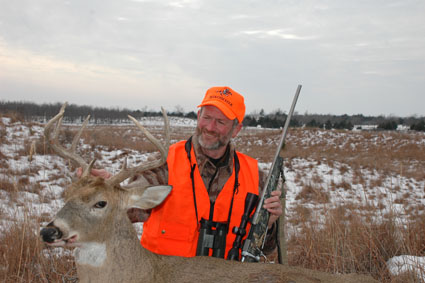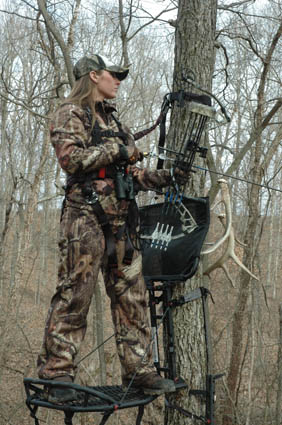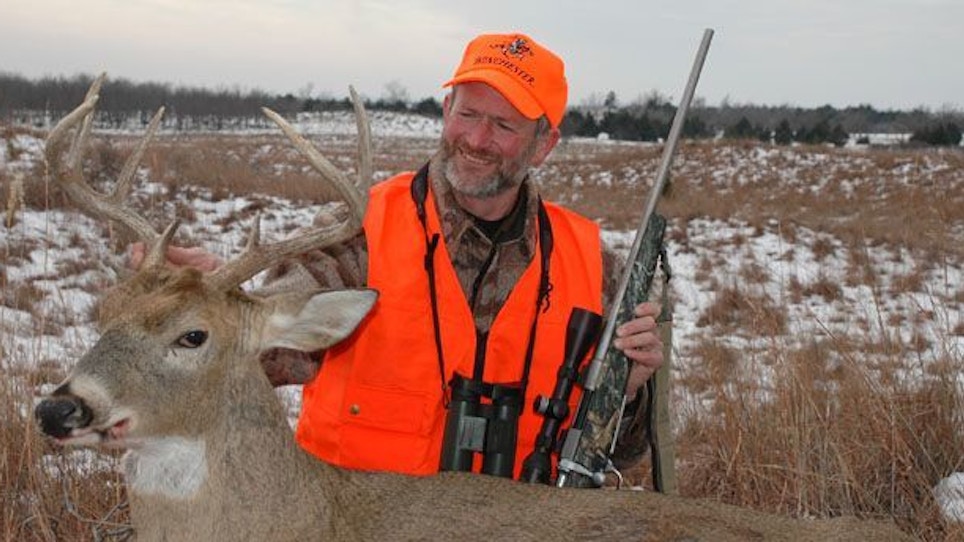 Whitetail hunters have in the past been obsessed with the search for more acreage. “If 100 acres is good,” they say, “then 1,000 acres must be better. With that much property, I'm sure to come across a monster.” In recent years, though, hunters have began an about-face, one which addresses the age-old questions of whether or not more property is actually more productive, or do 1,000 acres require more time and effort to scout than does a woodlot measuring but 60 acres in size? The answers to these questions — maybe, and yes — are causing whitetail hunters to re-evaluate their hunting tactics, and to realize bigger does not necessarily translate into better where quality bucks and overall deer populations are concerned. Hunters are beginning to understand good things do often come in small packages.
Whitetail hunters have in the past been obsessed with the search for more acreage. “If 100 acres is good,” they say, “then 1,000 acres must be better. With that much property, I'm sure to come across a monster.” In recent years, though, hunters have began an about-face, one which addresses the age-old questions of whether or not more property is actually more productive, or do 1,000 acres require more time and effort to scout than does a woodlot measuring but 60 acres in size? The answers to these questions — maybe, and yes — are causing whitetail hunters to re-evaluate their hunting tactics, and to realize bigger does not necessarily translate into better where quality bucks and overall deer populations are concerned. Hunters are beginning to understand good things do often come in small packages.
Regardless of the anticipated method of harvest, the common denominator most vital to success when hunting these small areas is, not surprisingly, scouting. Conversely, and often surprising, is the fact that locating and scouting these small packages often requires more time and effort than do the large expanses of ground.
One reason for this is hunters will want to find and obtain permission to hunt, if required, more than one small area during the course of the given season. Doing this allows properties to be rested while another is being hunted. Likewise, hunters who have access to several small parcels can employ different hunting strategies, such as drives, on non-adjacent plots without adversely affecting the hunting potential on another. Many hunters don’t do the scouting necessary for consistent success, thinking it’s a lot of work to locate, research and monitor a parcel of ground or, in some cases, several parcels. And the truth of the matter is, scouting, done right, is a lot of work; however, the benefits of in-depth scouting are many, with the results often making the trip to the taxidermist’s studio.
Savvy hunters know they can accomplish quite a bit from home before they ever set foot on the property. Using plat books and the Internet, landownership of potential new hunting areas can often be easily learned. Current plat books, available at county extension offices, outline land boundaries and list ownership, and when cross-referenced with high-relief maps such as online U.S. Geological Survey topographic maps, can provide very detailed information about the land in question.
Small landowners, too, can often provide valuable information. Surprisingly, many hunters stop the one-on-one scouting process once they’ve received permission. But the landowner, particularly the suburban landowner, is more often than not the most up-to-date and accurate source of information regarding the property and the animals on it. If possible, schedule time to sit with the owner. During such a session, hunters will want to address issues such as property boundaries, potential hazards, and areas of the farm where access is not desired. Now is the time, too, to ask the landowner to point out those areas of the property where he’s seen the most activity. The answers to these questions does not eliminate the need for hunters to become familiar with the property, but they can focus attention on certain areas of the property.
 Today, technology has taken the place of physically waiting, pre-season, for whitetails with the introduction of trail cameras. These devices can monitor a site 24 hours a day, providing the user with digital images of any and all comings and goings in front of the lens. Some high-tech models are capable of sending images wirelessly to home desktop computers or smartphones, though convenience does come with a price. But whether Old School 21st Century or High-Tech Gadget, it matters not; these cameras have certainly proved themselves valuable scouting tools, especially for those hunting small and perhaps even suburban parcels where variables such as non-hunting human activity can quickly alter a buck’s routine.
Today, technology has taken the place of physically waiting, pre-season, for whitetails with the introduction of trail cameras. These devices can monitor a site 24 hours a day, providing the user with digital images of any and all comings and goings in front of the lens. Some high-tech models are capable of sending images wirelessly to home desktop computers or smartphones, though convenience does come with a price. But whether Old School 21st Century or High-Tech Gadget, it matters not; these cameras have certainly proved themselves valuable scouting tools, especially for those hunting small and perhaps even suburban parcels where variables such as non-hunting human activity can quickly alter a buck’s routine.
Eventually, scouting gives way to questions of stands on these small parcels, and these quandaries are best answered by reviewing three variables — ease of access, ownership of the land being hunted, and adjacent animal activity.
Ease of access translates into the difficulty level of not only reaching a chosen hunting site, but in the style and placement of the stand itself. A 15-minute walk coupled with quiet stand placement might call for a self-climbing tree stand, or even a ground blind. However, longer distances, coupled with the potential for disturbance, might call for a more permanent style, one left for the duration of the season.
Land ownership is also linked to stand type. State-owned properties, national forests and timber company holdings typically prohibit the use of permanent tree stands. Here, self-climbers or ground blinds get the nod. Private landowners will often allow hunters to build permanent stands; however, hunters should always obtain permission prior to constructing such long-term hides.
Lastly, deer activity adjacent to the hunting location plays a role in stand decisions, particularly when hunting smaller tracts. For example, the pre-light placement of a temporary stand near a bedding area might create enough disturbance so as to alter patterned schedules and routines. In such cases and where permissible, permanent stands which allow stealthy access will, in the long run, often provide the best opportunities.
Still-hunting or driving, aka pushing, these small blocks can be productive. Often, a pair of hunters will organize a mini-drive, a tactic where one hunter is positioned at a scouted stand, while another slowly still-hunts from one edge of the parcel to the stander. Drives on a larger scale with six or more hunters taking part can also be effective. The key to drives, regardless of the number of people taking part, is that the drivers move slowly. In most cases, the human presence coupled with the abundance of scent — most drives work with the drivers walking with the wind — is more than enough to get deer moving in the desired direction. Here, the goal is a slow push, and not a panic.
Small places. Hidden and oft-forgotten, these little coverts can — and often do — harbor some of the country’s finest bucks; whitetails that grow old without ever being seen by hunters. The trophy whitetails taken each fall by those willing to investigate these postage stamp-sized parcels provide testimony that while bigger can be better, it’s often the case that smaller is frequently better yet.






